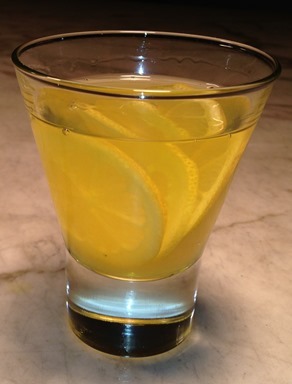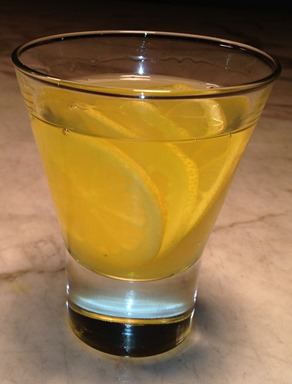Make Limoncello At Home
With the rise of liqueurs and aperitifs this summer, it should be no surprise that limoncello is making waves once again. Light and sweet, fruity and zesty, the popular Italian liqueur is the perfect digestif to drink at the end your summer dinners.
When we heard that several restaurants and bars, including Casa Nonna in New York City, were adding house-made limoncellos to the menu — and limoncellos of different flavors — we had to know how to make it at home. We asked Casa Nonna's beverage director, Chris Donahue, how to do it, how to serve it, and why we all love it.
The Daily Meal: Why is limoncello seeing such a comeback now?
Chris Donahue: Most simply, limoncello is a seasonal product. But from a broader perspective, with the uprising of international tourism, more people have the opportunity to experience limoncello in their travels. In an Italian home or traditional family-owned restaurant, a bottle of limoncello is placed on the table at the end of the meal. The custom is not just about the drink, but centers on sharing the moment with someone. Also, as people are experimenting more with products that they can create in their home, limoncello is a good choice as it's easy to make and not too challenging. Perfecting a batch of limoncello simply takes time, patience, and repetition in order to perfect the recipe and technique.
TDM: Is it because other liqueurs are experiencing a surge in popularity as well?
CD: In liqueurs, we're seeing a influx of smaller companies putting out interesting flavors that you haven't necessarily seen before. Producers are focusing on trying to make a legitimate product, with an emphasis on seasonal, local, and fresh. The goal is to make a quality product that's true to its flavor profile, which is definitely what we're attempting to achieve with our house-made "cellos."
TDM: What's the typical way to consume limoncello?
CD: Slightly chilled and served neat, traditionally in a 3-ounce pour.
CD: The average person is intent on following a recipe, but creating a delicious limoncello is like cooking the perfect dish; it's different for everyone. Our palates are different, so don't just follow the recipe but create something that appeals to you, your friends and family — the people who will actually be enjoying the drink. Taste test along the way, and if you want a sweeter flavor, add simple syrup; for increased tartness, more lemon zest; to taste less alcohol, add water.
TDM: Any food and limoncello pairings that work well together?
CD: Limoncello is generally served as a digestif, so it pairs best with desserts and sweets. The slight citrus flavor works well with creamy subjects — like Casa Nonna's tiramisu or gelati.
Click here for three recipes for house-made limoncello:

